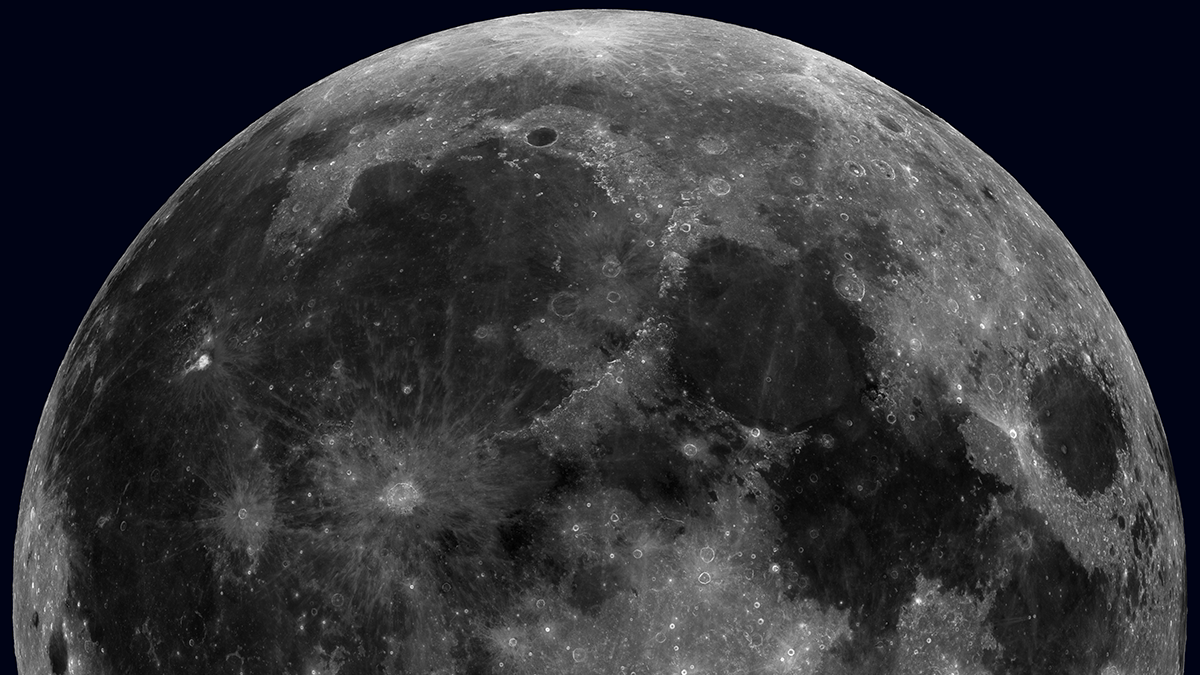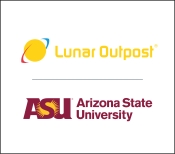ASU teams up with industry for moon rover project to advance lunar exploration for NASA Artemis missions

The moon, taken with 36 nearly complete wide-angle camera mosaics by the Lunar Reconnaissance Orbiter Camera team at ASU. Photo by NASA/GSFC/Arizona State University
Arizona State University continues to advance its presence in the commercial space sector, building strategic partnerships with industry leaders to drive innovation and discovery. Recently, NASA announced its selection of finalist teams for the Lunar Terrain Vehicle (LTV) Services contract competition, a significant step toward lunar exploration that will provide a highly capable rover both for NASA’s Artemis astronauts as well as for more general lunar science and exploration as a roving robotic laboratory.
Lunar Outpost, a private space company headquartered in Golden, Colorado, leads one of the three teams selected to perform a one-year feasibility study for NASA. Its Lunar Dawn LTV rover concept includes collaboration with ASU’s NewSpace Initiative, Milo Space Science Institute and Digital Discovery Initiative. It will also incorporate a diverse range of leaders from the commercial space industry as collaborators with the Lunar Outpost team.
This endeavor brings together expertise in science, spacecraft design, robotics, virtual reality and rover operations to advance the capabilities for lunar surface science and technology, highlighting the interdisciplinary nature of space exploration and the added value of industry and academic collaborations.
As part of the Lunar Outpost team, ASU is leading an international Science Council, coordinated by ASU’s School of Earth and Space Exploration Professor Jim Bell as chair. The Science Council consists of 21 experts in lunar science from 15 universities in the U.S., Canada, U.K., Australia and Norway (including six members from ASU) who will help infuse Lunar Dawn operational strategies with key science drivers identified by the global lunar science community, ensuring maximal science productivity in support of NASA’s Artemis program.
ASU plays a pivotal role in this combined effort, contributing faculty, staff and student expertise in scientific research and data visualization, technology development and rover operations. Joining forces with industry leaders, ASU aims to foster sustainable progress in space exploration, supporting commercial-governmental collaborative initiatives like Lunar Dawn in developing novel approaches and solutions for lunar surface mobility and science.
ASU’s NewSpace Initiative: Driving discovery through collaborations
ASU’s Space Technology and Science Initiative, or ASU NewSpace, continues to expand ASU’s mutually beneficial engineering, business and scientific relationships with the commercial space industry.
ASU leverages its strong science background and experience with designing, building and operating science instruments for numerous NASA robotic space missions, including rovers that can serve as models for many aspects of the robotic operation of Lunar Dawn.
ASU NewSpace’s network and the Lunar Dawn Science Council include lunar science and technology experts, as well as scientists who are helping to guide the Artemis campaign.
About NASA’s Artemis program
NASA Artemis campaign will land the first woman and first person of color on the moon, using innovative technologies to explore more of the lunar surface than ever before.
- Learn more about NASA’s Artemis campaign at nasa.gov/artemis.
- Learn more about NASA’s efforts in commercial space at nasa.gov/humans-in-space/commercial-space.
“The LTV collaboration between ASU and Lunar Outpost and other partners is a great example of the way ASU NewSpace connects our faculty, staff and students to the commercial space sector,” said Bell, director of ASU NewSpace.
“Our work to coordinate the Lunar Dawn Science Council leverages the substantial lunar scientific and technology expertise here at ASU and at our partner universities around the world.”
The Milo Space Science Institute: Democratizing access to space exploration
The Milo Space Science Institute, an integral partner with ASU NewSpace in linking ASU to the national and international commercial and governmental space sectors, is committed to making space exploration accessible to countries worldwide. Milo offers a collaborative model for university-led payloads and missions.
The objective is to foster international cooperation, share costs and risks, and undertake complex space initiatives that would be impossible for individual entities to pursue alone. Milo missions offer a way to develop space engagement while also significantly reducing the cost of entry into the space sector to agencies, universities and companies that seek to gain more experience in space.
The Milo Mission Academies offer professional training and workforce development to Lunar Dawn participants that is designed to cultivate local space ecosystems around the world. The academies allow participants to develop transferable skills within their home countries or institutions, contributing to a global future where space exploration, commerce and planetary stewardship are within reach for all.
“The Milo Institute organizes and conducts innovative space exploration missions, and it builds the capacity within our partner countries to support the missions,” says David Thomas, executive director of the Milo Institute. “The Milo model creates a path for universities, companies and government agencies that want to participate in compelling space exploration missions.”
ASU’s Digital Discovery Initiative: Pioneering virtual planetary research
ASU’s Digital Discovery Initiative, or DDI, is at the forefront of developing ultra-high-resolution digital replications of natural planetary landscapes. Enhanced with geochemical sensor data and rendered as virtual environments, these digital models allow planetary scientists to conduct field geologic research immersed within them.
This new approach is being explored for its efficacy in observational field geology compared with traditional field science methodologies. Current DDI projects involve lunar, Martian and terrestrial analog datasets, highlighting ASU’s commitment to pioneering new research methods in planetary science.
“Lunar Outpost’s Lunar Dawn project, as well as other lunar rover missions the company is involved with over the next few years, provide extraordinary opportunities to digitally capture rover traverse paths and create emulated environments from them,” said Kip Hodges, director of the Digital Discovery Initiative.
“We anticipate that these virtual environments will provide global access to lunar field research in ways that are currently unimaginable. It’s a real step forward in the democratization of planetary science.”
More Science and technology

Lucy's lasting legacy: Donald Johanson reflects on the discovery of a lifetime
Fifty years ago, in the dusty hills of Hadar, Ethiopia, a young paleoanthropologist, Donald Johanson, discovered what would become one of the most famous fossil skeletons of our lifetime — the 3.2…

ASU and Deca Technologies selected to lead $100M SHIELD USA project to strengthen U.S. semiconductor packaging capabilities
The National Institute of Standards and Technology — part of the U.S. Department of Commerce — announced today that it plans to award as much as $100 million to Arizona State University and Deca…

From food crops to cancer clinics: Lessons in extermination resistance
Just as crop-devouring insects evolve to resist pesticides, cancer cells can increase their lethality by developing resistance to treatment. In fact, most deaths from cancer are caused by the…
